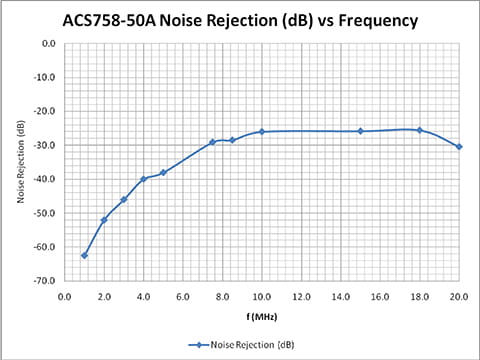Have Questions? Let us help!
We're passionate about innovation. Reach out and you'll hear back from an expert shortly.
One of our solution experts will be in touch with you shortly. Keep reading to learn more about our industry leading solutions.
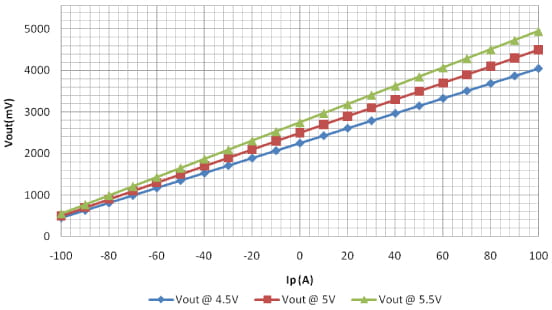
The current resolution of the ACS758 family of current sensor ICs is limited by the noise floor of the device output signal. For example, the ACS758-050 version can resolve a change in current level of about 250 mA, at 25°C, through its primary conductor leads. The 200 A version can resolve approximately 380 mA. At these levels, the amount of magnetic field coupled into the linear Hall-effect IC is just above its noise floor. Resolution can be improved significantly by filtering the output of the ACS758 for applications requiring lower bandwidth. Table 1 lists the noise levels, and hence current resolutions, at various bandwidths. Filtering was accomplished with a simple, first order RC filter. Note the related graphs, figures 2 through 5, which provide a better understanding of the device output resolution that can be achieved through filtering.
|
Table 1. ACS758 Noise Level and Current Resolution versus Bandwidth |
||||
|---|---|---|---|---|
| Device | Bandwidth -3 dB (kHz) |
Noise (mVp-p) |
Current Resolution | |
| (mA) | (% of full scale) | |||
| ACS758-200B | 120 | 3.84 | 384 | 0.192 |
| 10 | 0.92 | 92 | 0.046 | |
| 1 | 0.55 | 55 | 0.028 | |
| 0.2 | 0.15 | 15 | 0.008 | |
| ACS758-150B | 120 | 4.36 | 328 | 0.219 |
| 10 | 1.08 | 81 | 0.046 | |
| 1 | 0.52 | 39 | 0.026 | |
| 0.2 | 0.16 | 12 | 0.008 | |
| ACS758-100B | 120 | 5.69 | 285 | 0.285 |
| 10 | 1.49 | 75 | 0.075 | |
| 1 | 0.67 | 34 | 0.034 | |
| 0.2 | 0.22 | 11 | 0.011 | |
| ACS758-50B | 120 | 10.03 | 251 | 0.502 |
| 10 | 2.95 | 74 | 0.148 | |
| 1 | 1.05 | 26 | 0.053 | |
| 0.2 | 0.43 | 11 | 0.022 | |
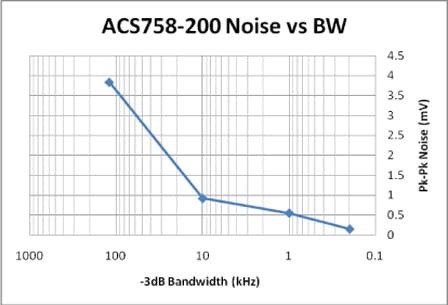
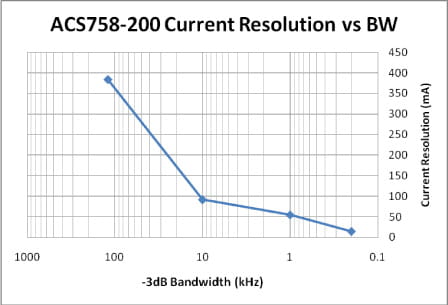
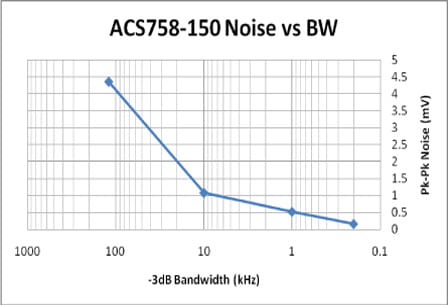
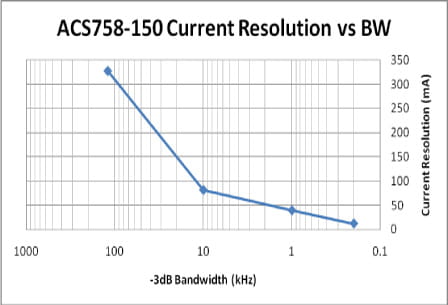
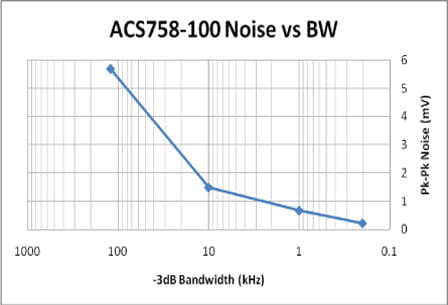
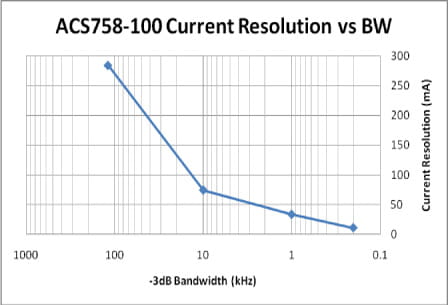
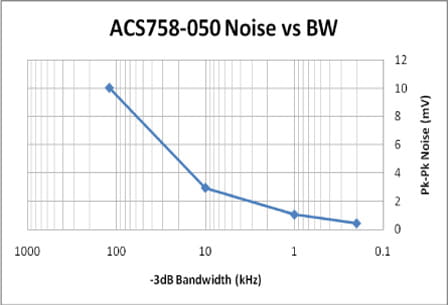
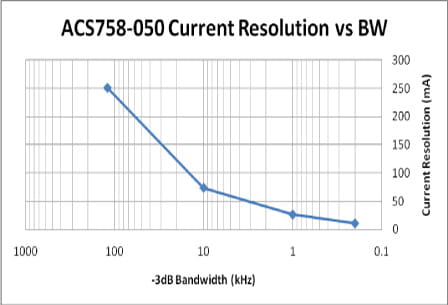
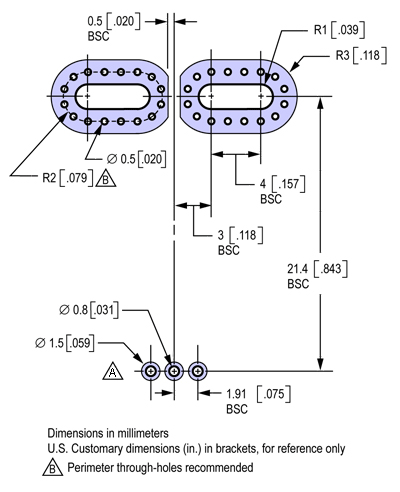
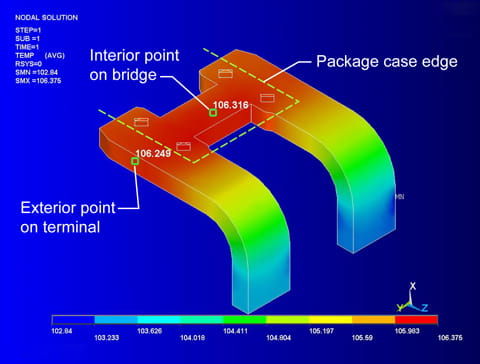
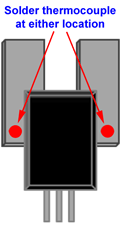
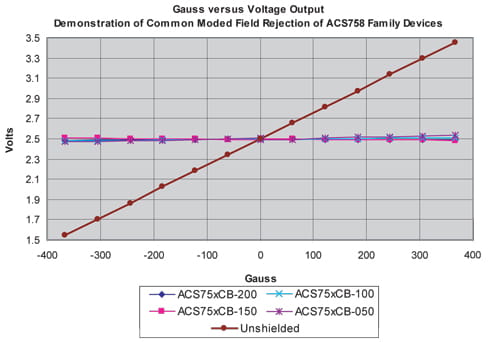
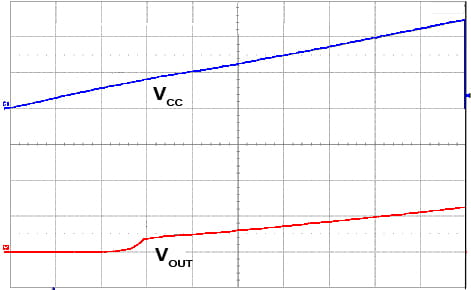
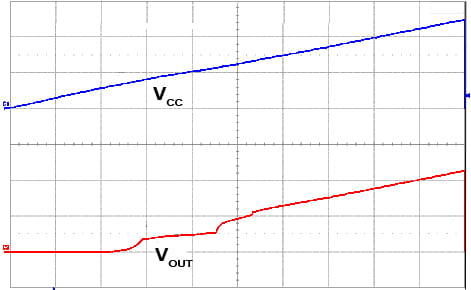
|
Table 2. ACS758 Time to Valid Output |
||
|---|---|---|
| IP (A) | 0 | 50 |
| Power-On Time (µs) | 8 | 10 |
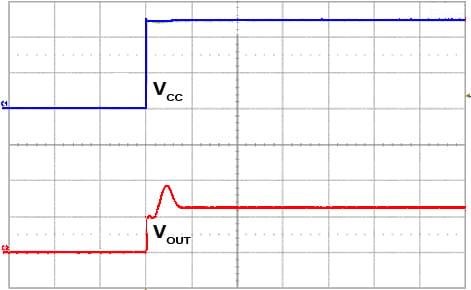
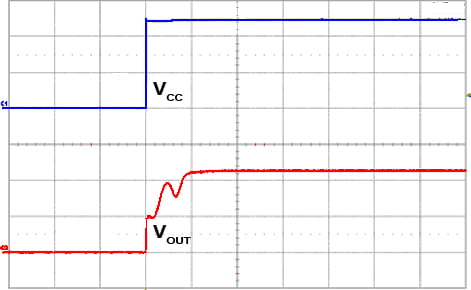
|
Table 3. Tested Maximum ACS758 Overcurrent Levels and Durations |
|
|---|---|
| Ambient Temperature (°C) |
Maximum Current (A) |
| 10 s, 10% duty cycle, 100 pulses applied | |
| 25 | 350 |
| 85 | 350 |
| 150 | 260 |
| 3 s, 3% duty cycle, 100 pulses applied | |
| 25 | 450 |
| 85 | 425 |
| 150 | 375 |
| 1 s, 1% duty cycle, 100 pulses applied | |
| 25 | 1200 |
| 85 | 900 |
| 150 | 600 |
|
Table 4. Typical Capacitive Coupling of a 20 V Peak-to-Peak Signal on the Current Path |
|||||||||||
|---|---|---|---|---|---|---|---|---|---|---|---|
| f (MHz) | 1.0 | 2.0 | 3.0 | 4.0 | 5.0 | 7.5 | 8.5 | 10.0 | 15.0 | 18.0 | 20.0 |
| VOUT(p-p) (mV) | 15.0 | 50.0 | 100.0 | 200.0 | 250.0 | 700.0 | 750.0 | 1000.0 | 1020.0 | 1050.0 | 600.0 |
| Noise Rejection (dB) | -62.5 | -52.0 | -46.0 | -40.0 | -38.1 | -29.1 | -28.5 | -26.0 | -25.8 | -25.6 | -30.5 |
